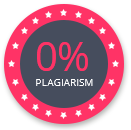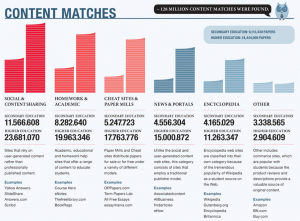Based a published article at Plagiarism.org, 59% of high schoolers have admitted using the web for plagiarizing their homework. This statistics is based on 43,000 participants in both private and public schools (Josephson Institute Center for Youth Ethics). Check out the following to fix plagiarism in your paper and be aware how to get away with plagiarism in the future!
How to Fix Plagiarism
To fix plagiarism, learn of the most effective methods used by students and writers from around the world. Some of the ways to fix plagiarism are highlighted in the following.
- Paraphrasing: It is putting someone else’s idea or ideas into your own words.
- Citing: You must follow proper citation style using this method. It can be Chicago, MLA or APA.
- Citing self-material: It involves using a material or research paper in your current work, but you must cite yourself anywhere in the essay to avoid self-plagiarism.
- Quoting: It is enclosing specific sentences or statements from the source to give emphasis on those. Do not use many quotations in your work though.
- Citing quotes: It involves an additional page or paragraph number for website content. This is also used for synonym substitution plagiarism avoid that some writers commit in their text.
- Referencing: The process involves listing down all the sources you have used in your paper, but this is in the additional page called the reference page.
How to Make a Copied Article Unique: Checking Paper for Plagiarism Online
There are several ways on how to make a copied article unique online. You can make use of Google for fragment searches to locate parts of your texts that are already published on other websites. You can also use tools, which are available for free and paid versions. They are easy to use and convenient, you can use them when nursing care plan writing. Many of them only require copying and pasting your text into the interface and start checking to detect for plagiarized content.

Copy and Paste Checker: What Are the Types of Plagiarism?
Patchwriting
According to BEYOND PLAGIARISM, it happens when the writer just paraphrases the material, but the language he or she used is very close to the structure or wording of the original.
Copy pasting
As the term implies, it is simply the act of copying and then pasting the original text to his or her essay, blog or any other written documents. And any content copy checker could detect such kind of plagiarism in a moment.
Direct
One of the most common types is the word-for-word copying of someone else’s work without reference. You must not do this type of copy paste text if you want to avoid plagiarism, so you may want to use a copy paste checker. But synonymization, or providing synonyms for words isn’t always the suitable solution to avoid direct plagiarism.
Self-plagiarism
It happens when students submit their previous works or combine it with their present essay without any permission from the involved professors. You may want to learn to paraphrase or respinning if you want to avoid this problem in your essays. You can also do citing quotes or quoting.
Mosaic
If you don’t cite the source yet you still borrow phrases from it, you are committing this type of plagiarism. You must find useful synonyms or use quotation marks to avoid the problem.
Accidental
This happens many times for people who do not cite their sources, or sometimes when they misquote the source. They sometimes also paraphrase using the same structure and sometimes-even wording of their source material.
An Example of Wrong Paraphrasing
Here is an interesting example of both wrong and correct variants of paraphrasing.
Original source material: Developing complex skills in the classroom involves the key ingredients identified in teaching pigeons to play ping-pong and to bowl. The key ingredients are: (1) inducing a response, (2) reinforcing subtle improvements or refinements in the behavior, (3) providing for the transfer of stimulus control by gradually withdrawing the prompts or cues, and (4) scheduling reinforcements so that the ratio of reinforcements in responses gradually increases and natural reinforcers can maintain their behavior.
Plagiarized: The same factors apply to developing complex skills in a classroom setting as to developing complex skills in any setting. A response must be induced, then reinforced as it gets closer to the desired behavior. Reinforcers have to be scheduled carefully, and cues have to be withdrawn gradually so that the new behaviors can be transferred and maintained.
Correct version: According to Gredler (2001), the same factors apply to developing complex skills in a classroom setting as to developing complex skills in any setting. A response must be induced, then reinforced as it gets closer to the desired behavior. Reinforcers have to be scheduled carefully, and cues have to be withdrawn gradually so that the new behaviors can be transferred and maintained.
Reference
Gredler, M. E. (2001). Learning and instruction: Theory into practice (4th ed.). Upper Saddle River, NJ: Prentice-Hall
Proper Paraphrasing Techniques
- Before using the copy and paste essay checker, you can learn proper paraphrasing techniques
- Read and understand the paper completely
- Take down notes
- Start writing
- Check for correctness of your work against the original
- Cite your source
- Check your paper using the copy and paste essay checker
There you have a guide on how to check whether an article is copied to follow if you want to ensure of a unique paper. Take note of these techniques as well as type of plagiarism and avoid them.








